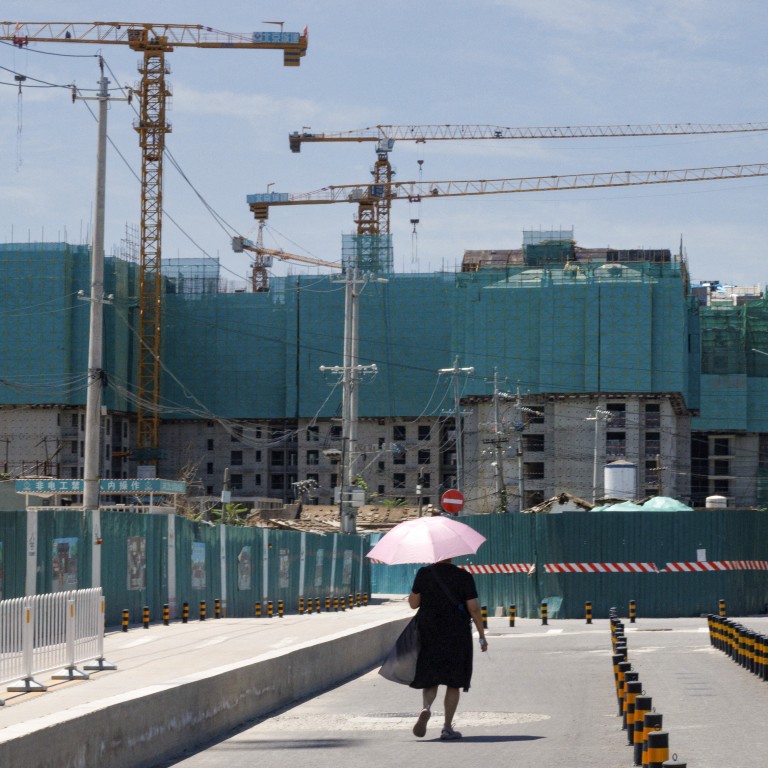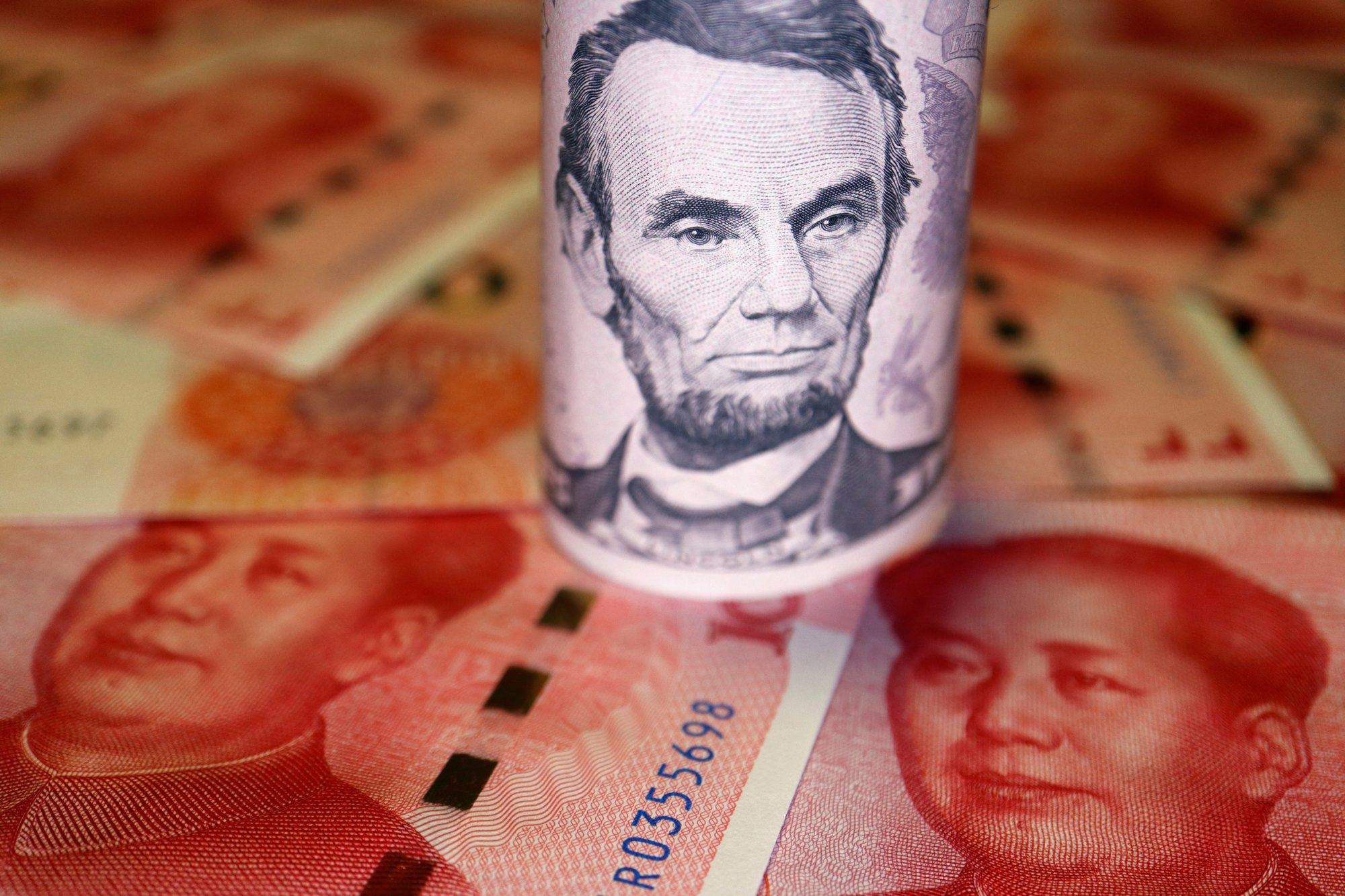
How China’s hubris led to a double debt crisis, despite the benefits of forging its own path
- Despite resisting the neoliberal prescriptions of international financial institutions, China’s financial system is now showing signs of stress and fragility
- The country’s situation has parallels with the US subprime mortgage crisis and European sovereign debt, while also highlighting the dangers of hubris and over-confidence
In his 2015 memoir, Dealing with China, the former US Treasury Secretary Hank Paulson recalled an admonition from China’s Vice-President Wang Qishan during the global financial crisis: “You were my teacher, but look at your financial system, Hank. We aren’t sure we should be learning from you any more.”
But China’s financial system is now showing signs of stress and fragility. The country is currently grappling with a double debt crisis that threatens to set back its efforts to become a high-income economy by the end of the decade.
Is China tripping over its pursuit for ‘common prosperity’?
This slowdown has now metastasised into a mortgage crisis as mortgage boycotts spread to over 300 projects in nearly a hundred Chinese cities. What remains unclear is whether (and how) this mortgage crisis would imperil the health of China’s banks and undermine their ability to lend in an economy that has slowed dramatically under the strain of zero-Covid.
China’s double debt crisis not only has striking parallels with the US subprime mortgage crisis and the European sovereign debt crisis more than a decade ago, but also highlights the dangers of hubris and the delusion that China is exceptional in its ability to avoid financial crises.

The domestic debt crisis
At first glance, it appears that there are so many differences between the US and China that the risks of the latter slipping into a full-blown financial crisis of the variety the former experienced in 2008-2009 are trivial.
First, the crisis in the US was ignited by a market correction in property prices in 2007. By contrast, the Chinese authorities intentionally sought to slow the property sector with the “three red lines” in 2020.
Second, in contrast to the considerable role played by subprime mortgages in the US’ crisis, Chinese banks’ strict underwriting requirements and the government’s social credit system ensured that China’s mortgages were predominantly composed of prime customers.
Third, as exemplified by the crackdown on Ant Group starting in late 2020, it appeared that China was vigilant about the risks caused by financial innovation, especially the securitisation that had spread toxic assets to the rest of the financial system and sowed the seeds of the global financial crisis.
However, the dynamics of the “doom loop” suggest that there are common features of financial crises. The doom loop starts with a fall in asset prices, say housing prices. As borrowers begin to default, the rise in non-performing loans drags banks into a liquidity crunch, leading to fire sales which cause further decreases in asset prices. As the value of assets are written down, the lending capacity of banks is impaired. This drives the real economy into a credit crunch as firms and households find it harder to borrow. As investments and aggregate demand shrink, asset prices fall further, leading to more fire sales.
The doom loop highlights certain key characteristics of debt-driven financial crises. Specifically, it does not matter whether the fall in asset prices was intended; what matters is a substantial increase in non-performing loans.
In the past year, 28 of the top 100 developers in China have defaulted or asked for extensions … more are likely.
Second, even if most Chinese borrowers are prime consumers, more buyers may get fed up with the developers that had misused sales proceeds and with banks that failed to safeguard their loans and decide to walk away from their obligations. Herding behaviour could then drive systemic contagion. More worryingly, advance sales of new flats – which property developers rely on to finance the completion of earlier projects – have started to fall, pointing to a generalised fear that new flat purchases would not be delivered.
Since 2009, China has had a debt-to-GDP ratio of more than 260 per cent, with an estimated 70 per cent of citizens’ financial assets tied up in housing. In this growth model, land sales serve as a major source of local government financing, generating about one-third of local government revenues.
The overseas debt crisis
Meanwhile, realising that domestic demand for infrastructure and real estate investments would taper off as China’s population peaks and the rate of urbanisation slows, China launched the BRI in 2013, expecting it to create overseas markets to absorb China’s excess capital investments and its savings glut.
The BRI made China the world’s largest bilateral lender. Since 2013, the value of BRI projects and transactions has reached US$838 billion. But in many emerging markets, the “project of the century” risks turning into a series of debt crises. The total value of loans that Chinese institutions had to renegotiate in 2020 and 2021 surged to US$52 billion, more than triple the sum in the preceding two years.
China’s debt-ridden local governments and banks are now facing grim prospects. Declining income from land sales and falling tax receipts are expected to cause a US$900 billion shortfall in revenues this year.
Banks have about US$9.2 trillion of exposure to the property sector. More than half is in the form of mortgage loans. Banks that are highly exposed to BRI loans are also in trouble as recipient countries with poor credit ratings are unable to service their debt. If big Chinese banks face rising non-performing loans abroad, they will be less able to rescue insolvent smaller banks at home.
Is China anyone’s ‘all-weather’ friend? Sri Lanka’s experience suggests not
The recent default in Sri Lanka is likely to force their Chinese lenders to write off a large portion of its loans. China has also found itself sucked into a dilemma of providing rescue loans to some BRI recipient countries to prevent their debt distress from sliding into payments’ crises. The financing of these BRI projects also echoes the capital flows from the European core to the periphery after the creation of the euro zone. Initially, these flows were seen as a sign of economic convergence. But they still ended up in financial disaster because relatively few of those flows had led to productive investments, and much more had gone to consumption spending, property booms, and white-elephant infrastructure projects.
Having lent vast sums to many of these commercially non-viable projects, Chinese banks are left with unpalatable options. As the English economist John Maynard Keynes said: “If you owe the bank US$100, that’s your problem; if you owe the bank US$100 million, that’s the bank’s problem.” With the belt and road, China is the bank.
Financial crises and economic development
While many developed economies had relied on debt financing and suffered severe financial crises as a result, debt-driven financial crises have also held back some developing countries from becoming high-income nations. China needs only to look at the major Southeast Asian economies for signs of the adverse long-term impacts of the Asian crisis a quarter of a century ago.
A faster-growing economy usually makes it easier to conceal the debt burden. But as the Chinese economy slows, not least because of China’s stubborn adherence to zero-Covid, it will become harder to contain the fallout of its double debt crisis. A high debt burden also makes it harder for China to rely on stimulating property and infrastructure development to support growth.
With the benefit of hindsight, Wang Qishan was far too confident in the ability of China’s state-led model to avoid financial crises. History does not repeat itself, but it rhymes. Rather than assume Chinese exceptionalism, it would be far better for China’s policymakers to accept that the laws of finance, like that of gravity, are universal.
Yang Wen is a Master of Public Management candidate at the Hong Kong University of Science and Technology. Donald Low is senior lecturer and professor of practice in public policy, and Director of the Institute for Emerging Market Studies, at the same university.



